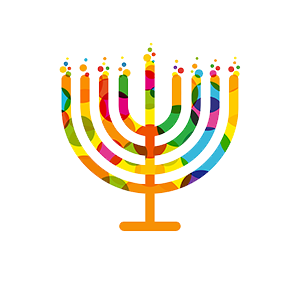Jewish Prayer: Part Three

Jewish Law makes it our duty to pray three times daily: in the morning, in the afternoon and at nightfall. These prayers are called morning prayer (shacharit), afternoon prayer (minchah) and evening prayer (arvith or maariv)...
Our Sages tell us that the custom of praying three times a day was originally introduced by our Patriarchs, Abraham, Isaac, and Jacob. Abraham introduced prayer in the morning, Isaac—in the afternoon, and Jacob added one at night.
When the Torah was given to us at Mount Sinai, our way of life was set out for us by G d. Torah means "teaching," "instruction," and "guidance"; for the Torah teaches us our way of life in every detail of our daily life. The Torah contains 613 commandments. Among them is the command to "serve G d with all our heart and all our soul."4 How do we serve G d with our heart? By praying to Him. In doing so, we fulfill not only the commandment of praying to G d, but also other commandments, such as to love G d and to fear Him, which are separate commandments.
During the first one thousand years, or so, since the time of Moses, there was no set order of prayer. Each individual was duty-bound to pray to G d every day, but the form of prayer and how many times a day to pray was left to the individual.
There was, however, a set order of service in the Holy Temple in Jerusalem, known as the Beit Hamikdosh, in connection with the daily sacrifices, morning and evening, while the evening sacrifice extended into the night. On special days, such as Shabbos, Rosh-Chodesh, and Festivals, there were also "additional" (musaf) sacrifices. Accordingly, it was perhaps not unusual for some Jews to pray three times a day, morning, evening, and night, in their own way. King David, for example, declared that he prayed three times daily,6 and Daniel (in Babylon) prayed three times daily facing in the direction of Jerusalem.7 There is evidence that there were, even during the time of the first Temple in Jerusalem, public places of prayer, called Beit Ha'am,8 which the Chaldeans (Babylonians) destroyed when they destroyed Jerusalem and the Holy Temple.
After the Holy Temple was destroyed and the Jews were led into captivity in Babylon, Jews continued to gather and pray in congregation. The places of prayer became like "small sanctuaries"—Beit Mikdash Me'at,9 during the years of exile, the children who were born and brought up in Babylon lacked adequate knowledge of the Holy Tongue (Hebrew) and spoke a mixed language. Therefore, when the Jews returned to their homeland after the seventy years' exile was over, Ezra the Scribe together with the Men of the Great Assembly (consisting of prophets and sages, 120 members in all) fixed the text of the daily prayer (Shemone Esrei—the "Eighteen Benedictions"), and made it a permanent institution and duty in Jewish life to recite this prayer three times daily.
Ever since then it became part of Jewish Law (Halachah) for each and every Jew to pray this ordained and fixed order of prayer three times daily, corresponding to the daily sacrifices in the Holy Temple, with additional (musaf) prayers on Shabbat, Rosh-Chodesh and Festivals, and a special "closing" prayer (Neilah) on Yom Kippur.
Thus, the main parts of the daily prayers were formulated by our Sages. These included the Shema prayer and Shemone Esrei, which still are the main parts of our morning and evening prayers. The daily Psalm (from Tehillim) which used to be sung by the Levites in the Holy Temple, the Holy Temple in Jerusalem, became part of the morning prayer. Other Psalms of David were included in the morning prayer, and special benedictions before and after the Shema were added. By the time the Mishnah was recorded by Rabbi Judah the Prince (about the year 3910—some 500 years after Ezra), and especially by the time the Talmud was completed (some 300 years later, or about 1500 years ago), the basic order of our prayers, as we know them now, had been formulated.
Steve Cohen
Steve Cohen is the founder of Apple of His Eye
This email address is being protected from spambots. You need JavaScript enabled to view it.
Subscribe to Our Newsletter
Download Our Latest Newsletter